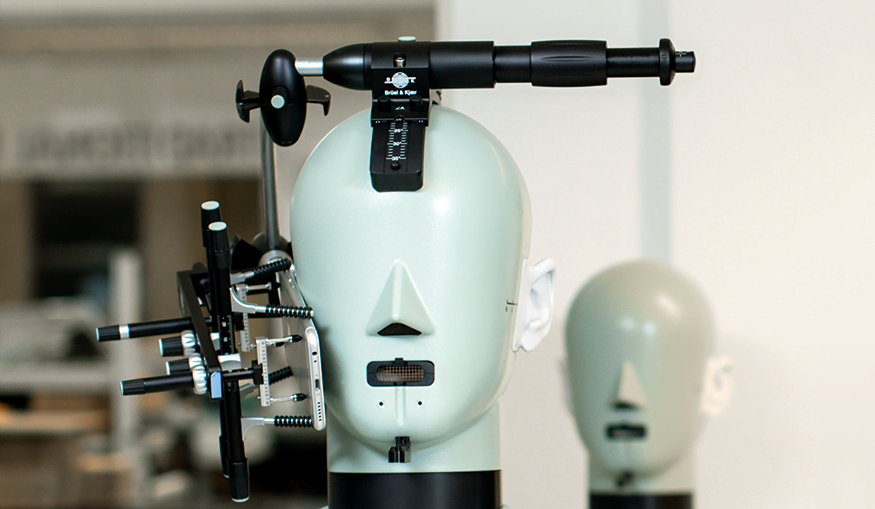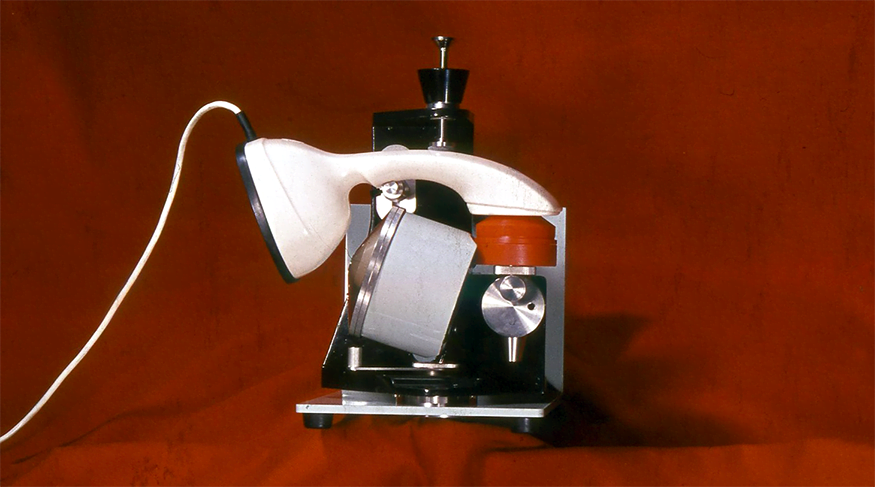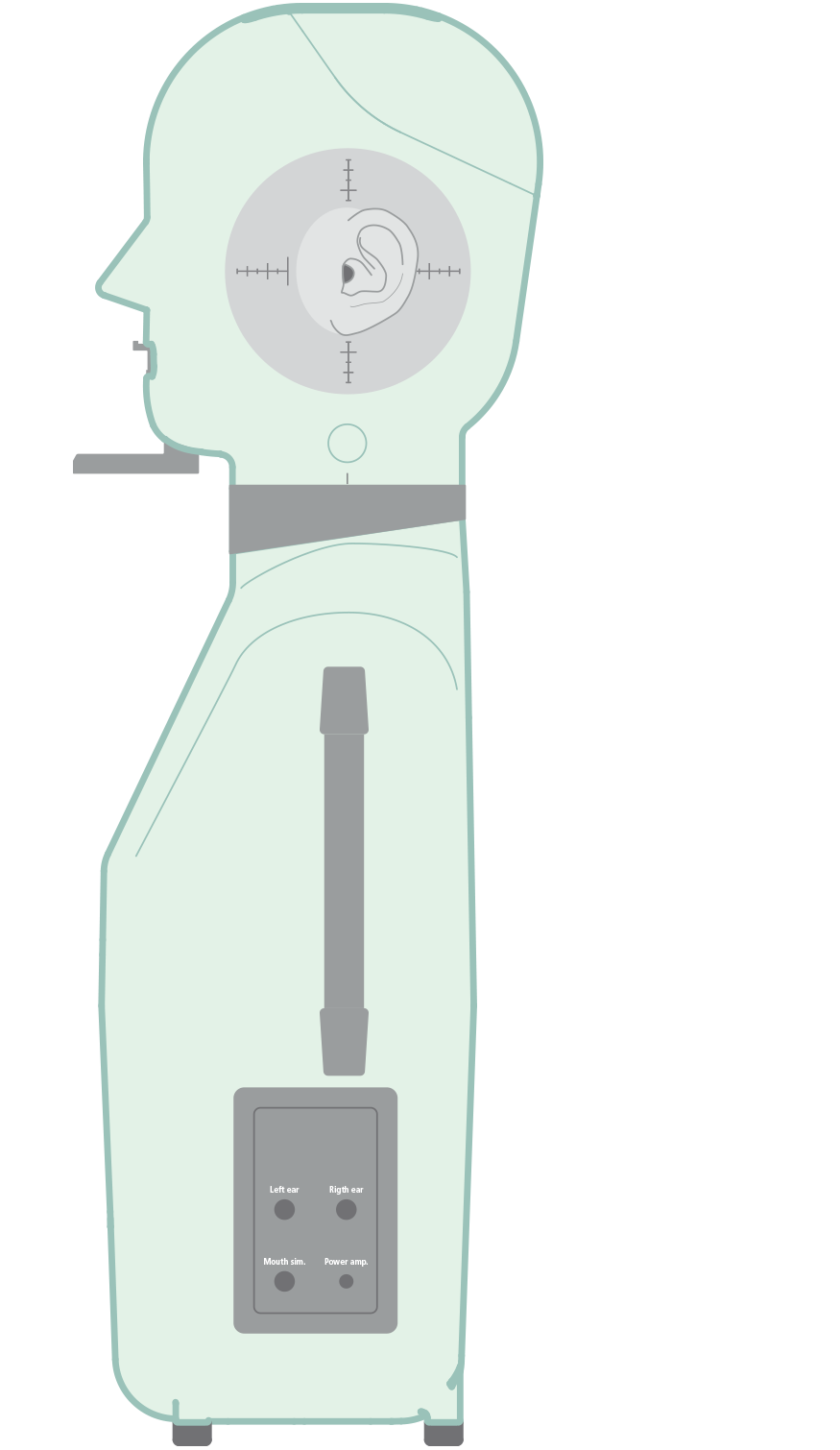ARTIFICIAL EAR TYPE 4152HATS Type 4128 was first released in 1986, but its origins go back a quarter of a century earlier when Per Brüel responded to a market need for better ways to evaluate hearing aid devices and participated in research related to artificial ears. This resulted in the development of Artificial Ear Type 4152.
Roll on to the 1980s and the proliferation of personal stereos, initiated by the Sony Walkman, together with the emergence of the mobile phone concept, drove the need for a more holistic method of audio performance beyond the hearing aid market – a need to consider more than just a better representation of the human ear but also the influence of the head and torso.
Evolution of Audio Product Evaluation
The HATS concept can be traced back to work done by Knowles Electronics in the early 1970s in pursuit of improved hearing aid evaluation and resulting in the development of the KEMAR head and torso '
simulator. But while the concept evolved the science of audio product evaluation, it suffered from a lack of symmetry in left/right ear response and had no ‘mouth’ restricting the application in communication products.
When considering the design for Head and Torso Simulator Type 4128, Brüel & Kjær engineers aimed at an average head geometry that could be defined in international standards while maintaining the accuracy and realism of human hearing. The style of today’s HATS reflects that. Type 4128 also included a version of the recently developed and standardized IEC 711 coupler which, for the first time, provided accurate acoustic impedance matching the human ear up to 8 kHz.
While there are several manufacturers of HATS, the one you’re most likely to notice is Brüel & Kjær’s Type 4128.
Our Head and Torso Simulators are often referred to as ‘the green man’ – not only because it sports the largest area of Brüel & Kjær’s ubiquitous green of any current product, but also because B&K HATS lead the market.

The product was an instant success and found supporters beyond the target markets of communication and hearing aids. Manufacturers in the rapidly growing high-end audio headphone market found the HATS invaluable to optimizing their products.
The Age of Digital Audio
By the turn of the millennium, the digital audio age was already in full swing, transitioning from CD discs to MP3 players and then the Apple® iPod® revolution.
The improvement in the quality of source material and audio reproduction was continuous and the design limitations of Type 4128 were being challenged by these developments. Early in the new decade, Brüel & Kjær’s R&D team had been mapping out the research needed to expand the fidelity of a Type 4128 successor, but it was the launch of the Apple iPhone® in 2007 that added urgency to the need for a new product.
The iPhone finally brought together mobile phones, entertainment systems, and personal computers into a single device, requiring new, integrated methods of measurement. The maximum frequency limit of 8 kHz was fine for the previous generation of communication devices, which were limited to a bandwidth closer to 3 kHz, but incapable of accurately assessing the performance of devices that claimed playback up to 15 kHz or even 20 kHz.
Telephone Test Head Type 4905 – shown testing Ericsson's 'Eriocofon', also known as the cobra telephone (photo ca. 1970)

The key to successfully achieving the higher performance lay in better matching the acoustic impedance of the human ear. This meant a new coupler design, abandoning the simplified ear canal (a simple tube, 7.5 mm diameter by 8.4 mm long) and replacing it with an accurate geometric representation of the human ear.
Brüel & Kjær engineers accurately measured the ear canal geometries of over forty people and then averaged the measurements to produce a target model. The correct geometry was, however, only part of the story as the materials comprising the walls of the ear canal had to be optimized for the correct and variable damping characteristics of the ear as it transitioned from soft pinna to the hard, bony structure towards the eardrum.
RELATED PRODUCT
High-Frequency HATS Type 5128
Much numerical simulation of acoustic properties and many prototypes later, the new ear simulator achieved the goal of producing an accurate ear response measurement extending to 20 kHz and led to the birth of High-frequency HATS Type 5128 – a worthy successor to the original green man.
Alun Crewe
Vice President
Telecom Audio Brüel & Kjær


